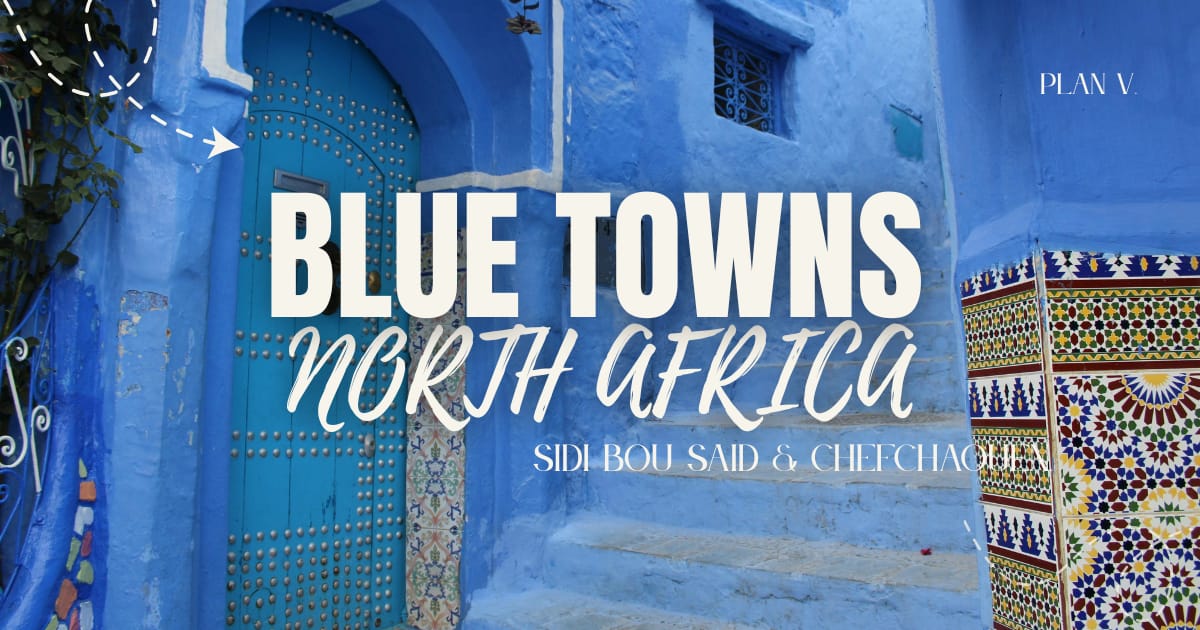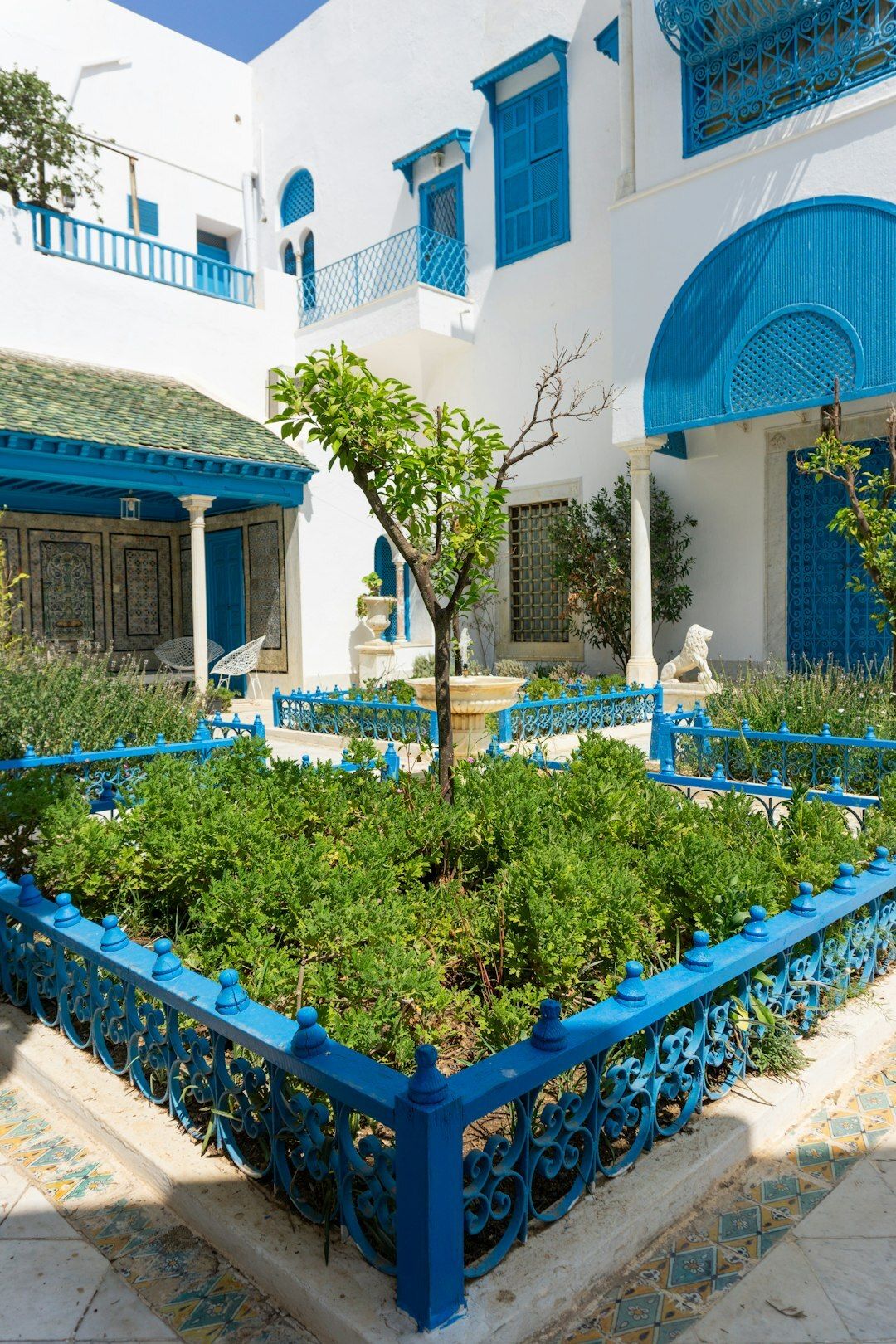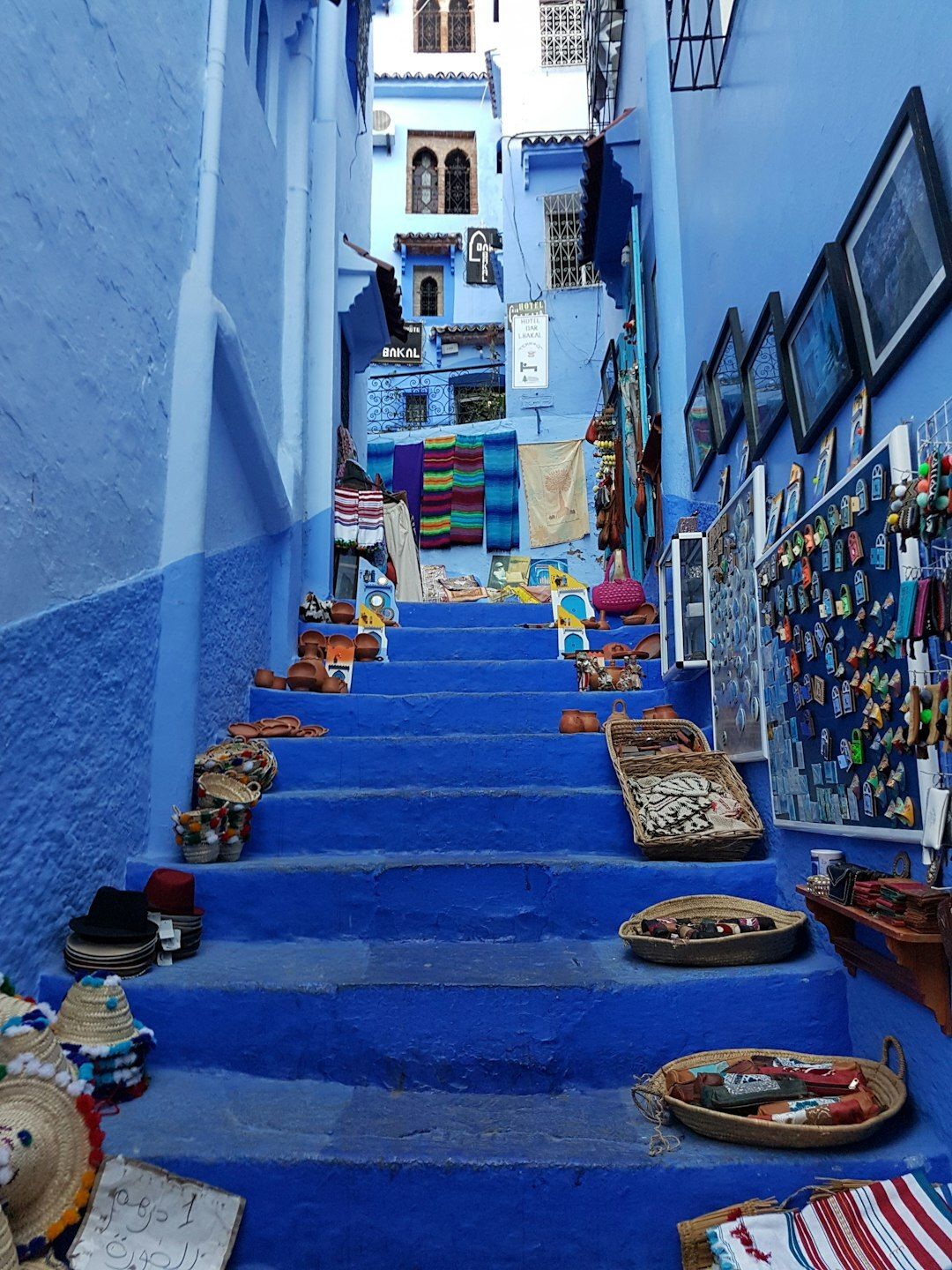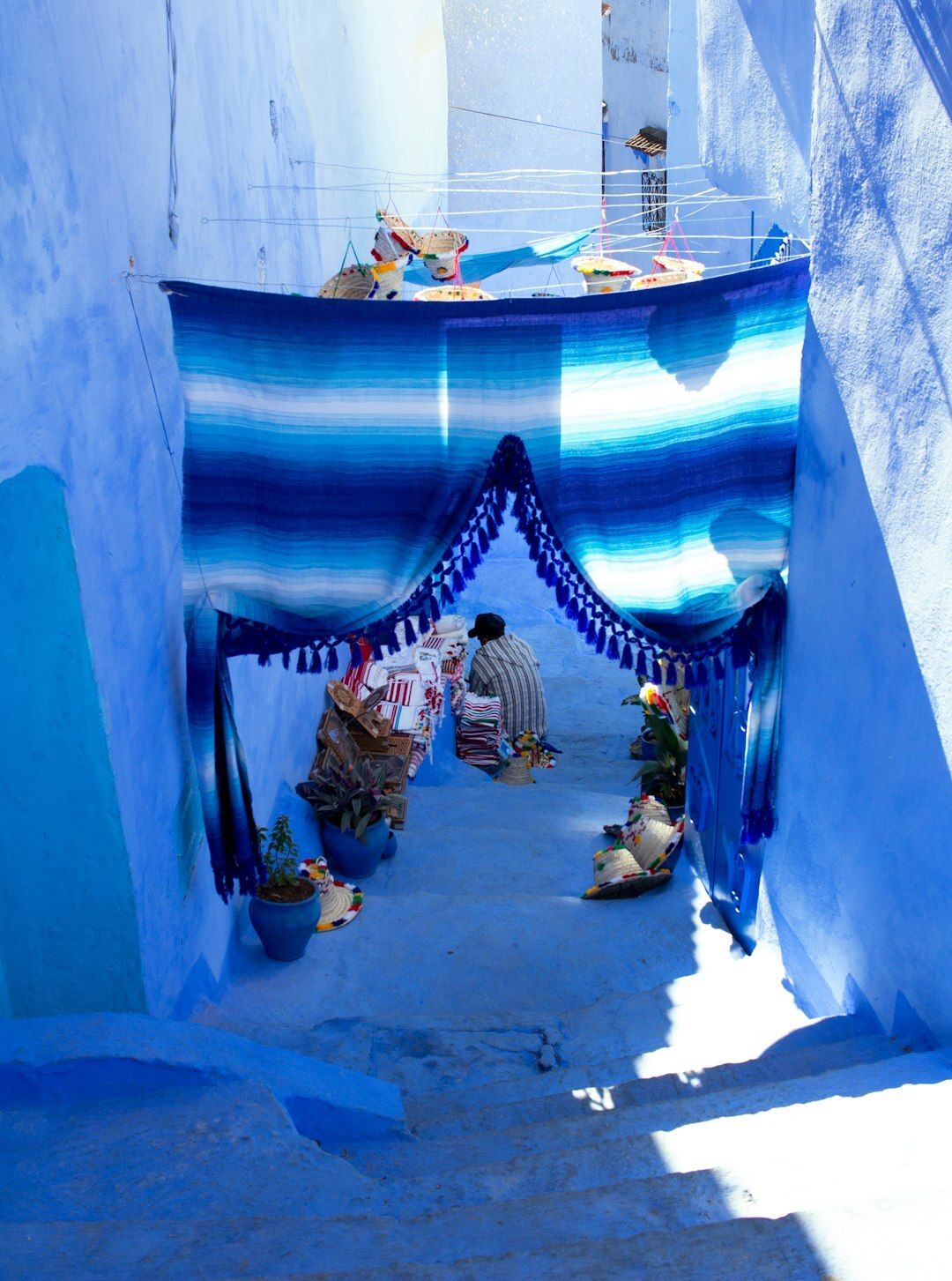- Plan V.
- Posts
- 🧿💙May your journey be as deep as the blue that awaits you: ULTIMATE GUIDE of North African culture 🇹🇳🇲🇦
🧿💙May your journey be as deep as the blue that awaits you: ULTIMATE GUIDE of North African culture 🇹🇳🇲🇦
Two destinations that offer more than Instagram-worthy backdrops. They provide portals into North African culture and architecture as cultural expressions.
Learn AI in 5 minutes a day
This is the easiest way for a busy person wanting to learn AI in as little time as possible:
Sign up for The Rundown AI newsletter
They send you 5-minute email updates on the latest AI news and how to use it
You learn how to become 2x more productive by leveraging AI

Two places that capture the heart of every visitor. Sites that offer a cultural experience that compels you to pause for a moment, analyze your surroundings, and adapt to a monochromatic reality.
Welcome to Sidi Bou Said, Tunisia & Chefchaouen, Morocco.

The Insider's Guide to Sidi Bou Said & Chefchaouen 💙
Though separated by over 1,500 kilometers, these blue jewels share remarkable similarities. Both cling to hillsides overlooking strategic landscapes—one gazing at the Mediterranean Sea, the other nestled in the Rif Mountains. Both offer refuge from the intensity of North African summers through their cooling blue hues.
What to expect?
🇹🇳 Sidi Bou Said, Tunisia
| 🇲🇦 Chefchaouen, Morocco
|
Why should you visit these destinations? 🧿
These towns offer something unique: the opportunity to slow down, observe daily life at a human pace, and understand how color, architecture, and culture interweave to create places of extraordinary beauty.
All the stories worth knowing—all in one place.
Business. Tech. Finance. Culture. If it’s worth knowing, it’s in the Brew.
Morning Brew’s free daily newsletter keeps 4+ million readers in the loop with stories that are smart, quick, and actually fun to read. You’ll learn something new every morning — and maybe even flex your brain with one of our crosswords or quizzes while you’re at it.
Get the news that makes you think, laugh, and maybe even brag about how informed you are.
Sidi Bou Said, Tunisia: The Artist's Haven by the Mediterranean 🇹🇳💙
Sidi Bou Said's iconic blue-and-white aesthetic became official in 1915, when French artist and musicologist Baron Rodolphe d'Erlanger moved to the town and, struck by its beauty, convinced local authorities to mandate the color scheme. The specific shade—a brilliant cobalt blue paired with dazzling white—was chosen to reflect the Mediterranean sky and sea while creating a cohesive visual identity. Before this, the town's buildings displayed various colors typical of Tunisian architecture.
Although the light colors provide an aesthetic touch, they were chosen to act as reflectors of the intense North African sun and keep the houses cool during the summer.
The best time to visit is April-May or September-October. These shoulder seasons offer comfortable temperatures, fewer tourists, and the opportunity to experience the town at a more authentic pace.
🌡️ Temperature Guide
| 🚎 Getting There from Tunis
|

What to see & do? 🔵
Sidi Bou Said is small and relatively quick to explore, but there's no need to rush. Lose yourself in its streets and watch as the light changes the blue in every corner.
To delight your palate with regional flavors, visit El Bey Restaurant. A beloved spot for locals and visitors alike, offering authentic, well-prepared food in a welcoming atmosphere.
To gain a deeper understanding of a culture, a visit to a museum is essential. Ennejma Ezzahra Palace, once home to Baron d'Erlanger, a French painter and musician specializing in Arab and Tunisian culture, is now a museum open to the public. The palace is an architectural masterpiece adorned with decorative art.
If you go to Sidi Bou Said Marina at dawn, you can see the fishing boats and yachts. In the afternoon, the sunsets are truly magical, worthy of the Mediterranean.
Want to buy fresh food? The village market is held every Thursday. This is where locals buy fruits and vegetables, spices, and household items.
You can't leave this blue village without trying Bambalouni, a type of fried doughnut sprinkled with sugar, eaten for breakfast, and a true local specialty. Other must-try flavors include the typical Tunisian Mint Tea with Pine Nuts and Brick à l'œuf, a puff pastry tart with onion, egg, and cilantro.

Ennejma Ezzahra Palace
SPANISH SECTION:
Camping cerca de CDMX (río subterráneo)
Idealizar un viaje al centro de la Tierra es una cosa, pero hacerlo y establecer un camping en un río subterráneo es otra. Por suerte para muchos, México es un país que lo ofrece todo. Desde hiking al Pico de Orizaba con más de cinco mil metros de altura hasta un descenso de más de 400 metros a una cueva que conecta grutas, cuevas y rocas metamórficas.
Ideal para hacer un camping subterráneo es el río Chontalcuatlán, mejor conocido como El Chonta. Éste tiene una extensión de ocho kilómetros, se localiza en Guerrero y está a dos horas y media de Ciudad de México. Si estás en busca de un camping cerca de CDMX, esta es tu ruta.
Chefchaouen, Morocco: The Blue Pearl of the Rif Mountains 🇲🇦💙
Chefchaouen's blue transformation began in the 1930s and intensified in the 1990s, though its origins are debated. The most widely accepted explanation links the tradition to Jewish refugees who settled here after fleeing the Spanish Inquisition in the 15th century. In Jewish tradition, blue (specifically tekhelet) represents the sky and heavens, serving as a reminder of God's presence. The blue may also have been believed to repel mosquitoes and create a cooling visual effect.
Chefchaouen displays a spectrum of blues—from pale powder blue to deep azure—creating a more organic, less regulated aesthetic. Residents regularly repaint their homes, maintaining the tradition as both cultural practice and tourist attraction.
Best Time to Visit: April-May or September-October. Spring brings cascading wisteria and blooming gardens, while autumn offers crystalline light perfect for photography.
🌡️ Temperature Guide
| 🚎 Getting There From Tangier (closest major city)
|

What to see & do? 🔵
Getting lost in the Medina is part of the experience. The streets resemble a labyrinth because they are designed to disorient intruders. But walking through them is unparalleled when shades of blue appear everywhere.
There's no better place to observe local life than Uta el-Hammam Square. Sip tea at a café and watch families stroll by, as well as the hustle and bustle of the merchants.
Much of the city's history is contained within the Kasbah, a historical monument dating back to the 15th century and built by Rachid Ben Ali to protect the city. The Kasbah is located in Outa El Hamman Square, right in the heart of Chefchaouen. Adjacent to it are the Great Mosque and an ethnological museum. Entrance to the Kasbah costs six euros for foreigners, two euros for locals, and is free for children under 12.
A hike to the highest point in the city takes you to the spot where Chefchaouen meets nature: Ras el-Maa Waterfall. If you climb a little higher, you'll be rewarded with a wider view of the town and greater tranquility.
The Spanish Mosque, the artisan workshops, and the local market are other must-see spots during your visit to the town.
A bowl of Harira, some Tagine, and a cup of Moroccan Mint Tea complete your experience.

See you next time,

Will A Book Grow Your Business?
No one buys a beach house from book sales—they buy it from what the book makes possible.
Author.Inc helps founders turn ideas into world-class books that build revenue, reputation, and reach.
Book a free 15-minute ROI call to see if your book is a go—or a smart wait.





Reply